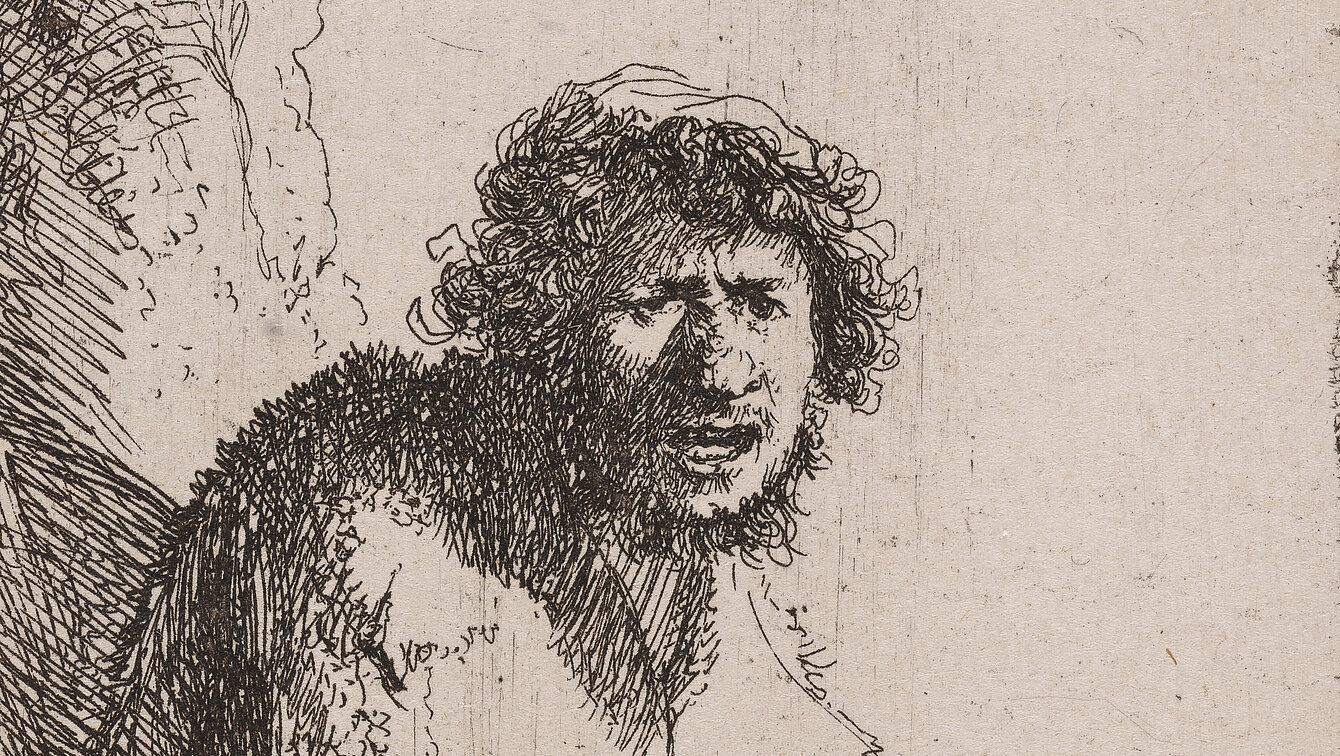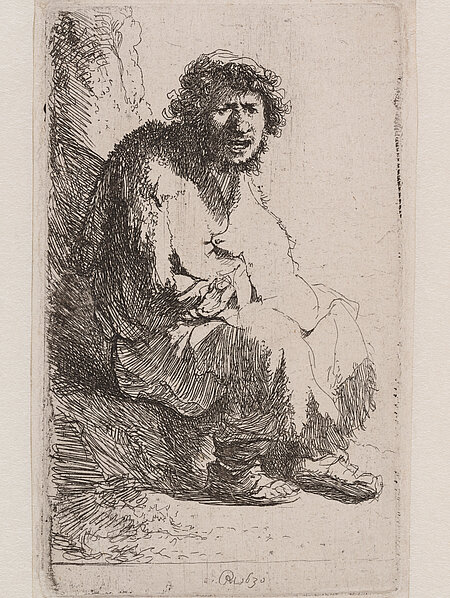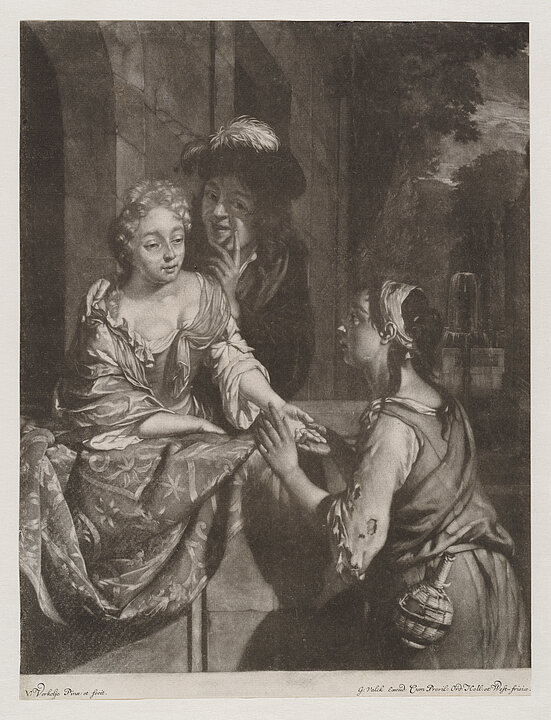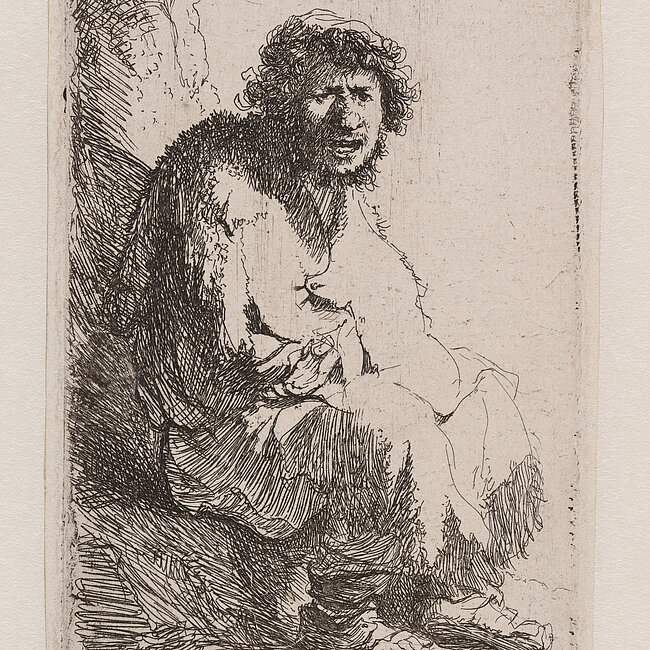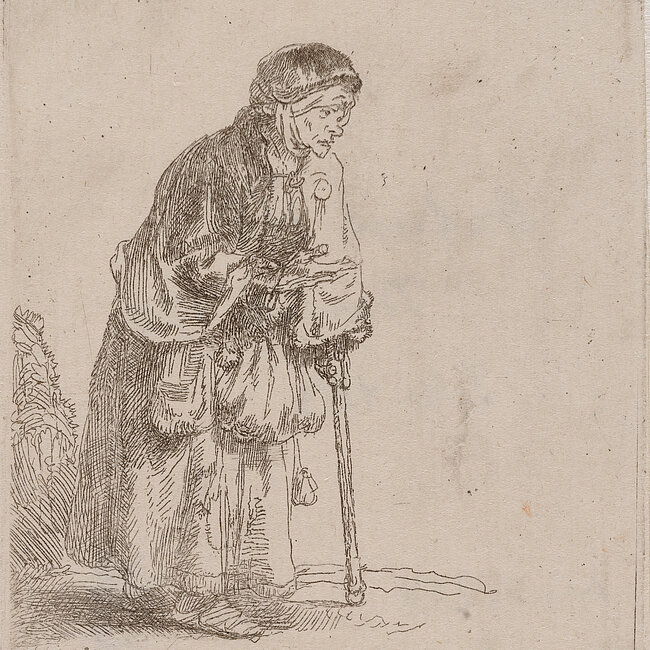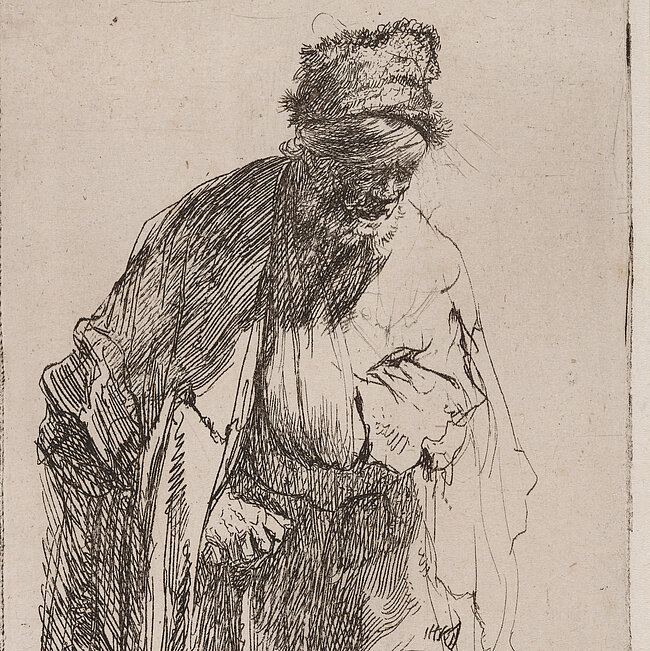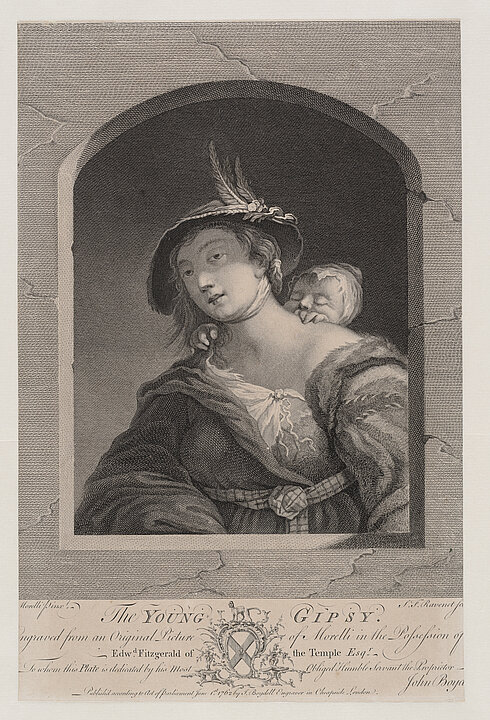This mezzotint is a reversed reproduction of a painting that is located today in the Toledo Museum of Art (USA). Painter and mezzotinter are here one and the same person: Nicolaas Verkolje. The Dutch artist learned the two very different techniques from his father Jan I. Art historian and critic Alfred von Wurzbach wrote in his dictionary of Dutch and Flemish artists (1906) that Verkolje’s “exceptional mezzotints” were highly valued by art lovers.
A young, elegantly dressed woman is leaning on a stone balustrade in front of a stately house and extending her left arm (her right arm in the painting) towards another woman who comes from poor circumstances. Her simple clothes are full of holes, and the bast rope around her bottle is unravelling. She is holding the hand of her noble counterpart in hers so she can tell her fortune and satisfy her curiosity. The women’s eyes meet. A young man is standing directly behind the inquisitive young woman with his arm around her shoulder and appears to be whispering something to her.
In the park in the background, water is gushing from a fountain. This could be a reference to the fons vitae, the fountain of life. According to Christian tradition, however, the fountain can also be understood as a place of love, or as a metaphor for marriage.




















